If multiple components are installed on a computer, then ensure that all applicable components are selected for upgrade. In such a situation, the upgrade sequence may vary. Refer to the appropriate procedures for upgrade requirements and steps specific to the component.
Verify that the computer in which you wish to upgrade the software satisfies the minimum requirements specified in System Requirements - File Archiver for Windows Agent.
Supported Upgrade Paths
The following table provides a list of supported upgrade paths for the current software version. If the version currently installed on your computer is not listed here, contact your software provider for more information.
Installed Version |
Upgrade to Version 8.0.0 |
Information |
| 6.1.0 | Supported | Perform a direct upgrade to Version 8.0.0. |
| 7.0.0 | Supported | Perform a direct upgrade to Version 8.0.0. |
Upgrade Requirements
General
- Review the Upgrade Strategy before upgrading the software.
- Verify that no jobs are in progress or scheduled to occur while the
software is being upgraded on the client. If jobs are scheduled, either
perform the upgrade at another time or disable all jobs in the client using
the Activity Control tab from the Client Computer Properties
dialog box in the CommCell Console.
Once the upgrade is completed, you can enable the jobs from this dialog box.
- Verify that the CommServe computer is accessible and all services on the CommServe and the MediaAgent in which you wish to perform the upgrade are running.
- Verify that the SQL Server instance used by the CommServe is running on the CommServe computer.
- Verify that all applications (CommCell Console, Service Control Manager) are closed.
- Close all applications and disable any programs that run automatically, including antivirus, screen savers and system utilities. Some programs, including antivirus software, may be running as a service. Stop and disable all non-essential services before you begin. You can re-enable them after the upgrade.
- The files and folders associated with CommCell components should not be opened by other applications (for example, Windows Explorer, FTP, etc.) on this computer or from other computers during the upgrade.
- Verify that you have the
software
installation disc that is appropriate to the destination computerís
operating system.
Make sure that you have the latest software installation disc before you start to install the software. If you are not sure, contact your software provider.
Before You Begin
- Ensure that you are logged on to the computer as a local Administrator or as a member of the local Administrators group on that computer.
Upgrade Procedure |
||
| 1. | In this screen, you choose the language you want to use during installation. Click the down arrow, select the desired language from the pull-down list, and click Next to continue. | |
| 2. |
Select the option to install software. NOTES
|
|
| 3. |
Select the option to install software on this computer. NOTES
|
|
| 4. |
Read the Welcome screen.
Click Next to continue, if no other applications are running. |
 |
| 5. |
Read the virus scanning software warning.
Click OK to continue, if virus scanning software is disabled. |
 |
| 6. |
Read the license agreement, then select I accept the terms
in the license agreement. Click Next to continue. |
 |
| 7. |
Enter the username and password information for an external
domain user account or a CommCell user account. This authorizes the installation
of an agent on the CommCell.
NOTES
Click Next to continue. |
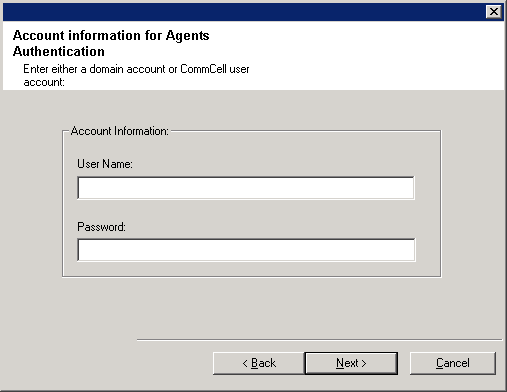 |
| 8. |
Click Next to continue with the upgrade. NOTES
|
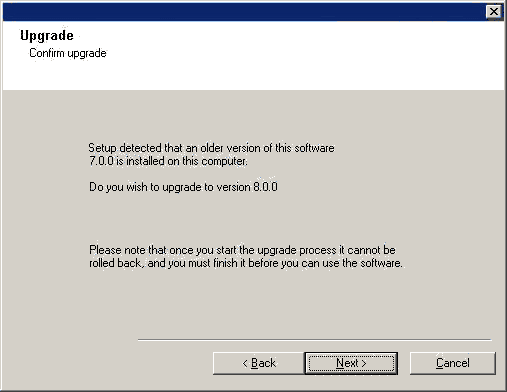 |
| 9. |
Click Yes to continue. This will not save any files (such as command
line scripts) or folders from the <software installation path> folder. NOTES
|
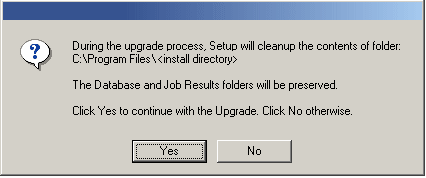 |
NOTES
- If you click Exit Setup then the upgrade process will not be complete, and you will need to resume the setup program in order to finish the upgrade.
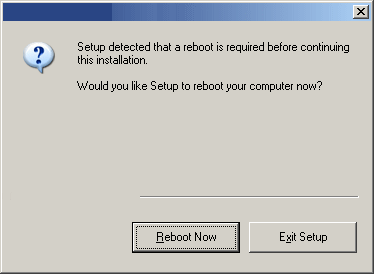
NOTES
- Internet connectivity is required to download updates.
- This step is applicable when installing on the first instance.
- Updates are downloaded to the following directory:
<software installation>/Base/Temp/DownloadedPacks.
They are launched silently and installed automatically for the first instance.
Click Next to continue.
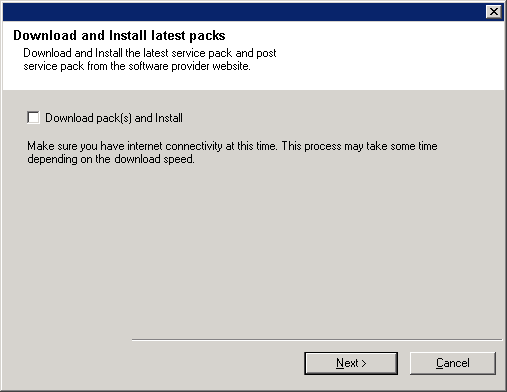
NOTES
- The Completion Report will reflect the components upgraded on the computer, and may look different from the example shown.
The upgrade is now complete.

Post-Upgrade Considerations
General
- Install post-release updates or Service Packs that may have been released after the release of the software. If you are installing a Service Pack, verify and ensure that it is the same version as the one installed in the CommServe Server. Alternatively, you can enable Automatic Updates for quick and easy installation of updates in the CommCell component.
- If Activity Control was disabled on the client prior to the upgrade, enable it after the upgrade using the Activity Control tab from the Client Computer Properties dialog box in the CommCell Console.
Agent Specific
If you are upgrading the software from 6.1.0 to 8.0.0
-
After upgrading, the recovery job history will display recovery jobs run before the upgrade and is available at the client and agent levels, but not at the instance and Archive Set levels.
-
To take advantage of the new, powerful and feature rich content indexing engine, perform the steps outlined in Upgrade Considerations after the upgrade. This will also ensure that both the data in storage and new data secured through data protection operations are content indexed and searchable.
If you are upgrading the software from 7.0.0 to 8.0.0
-
After upgrading, the recovery job history will display recovery jobs run before the upgrade and is available at the client and agent levels, but not at the instance and Archive Set levels.
-
It is recommended to remove the On-Demand Archiver Sets prior to upgrading and recreate them after the upgrade is complete.
|
The File Archiver for Windows Agent and the File Share Archiver Agent has been merged in this release. For detailed information on the impact of this merge, see Merge Impact of File Archiver for Windows/File Share Archiver Agents in Upgrade Overview. |